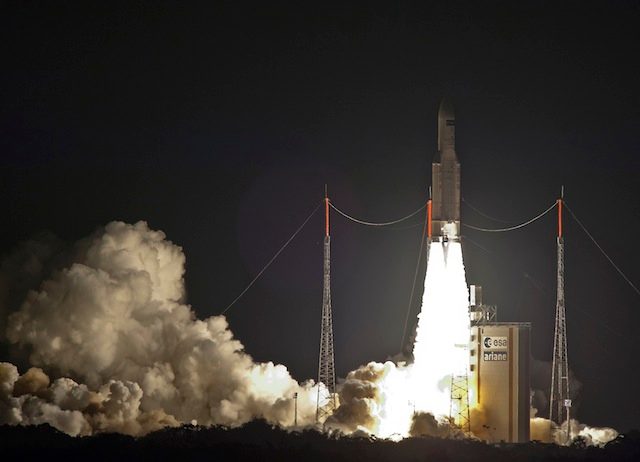SUMMARY
This is AI generated summarization, which may have errors. For context, always refer to the full article.

LUXEMBOURG, Luxembourg (UPDATED) – European nations announced Tuesday, December 2, they would build a new-generation rocket in a multi-billion-euro (dollar) program to maintain their grip on the world market for satellite launches.
European Space Agency (ESA) ministers “took a major decision – to develop a new launcher, the Ariane 6, which will replace the Ariane 5, with a maiden flight scheduled for 2020,” French Research Minister Genevieve Fioraso said in a statement describing the deal as “historic.”
Tuesday’s agreement came after months of behind-the-scenes haggling to ease a rift between France and Germany over Ariane 5’s successor.
“This is a very important day for the space agency after sometimes very tough but very fair and open discussions,” said Luxembourg Economy and Trade Minister Etienne Schneider.
“It’s a success – I even dare to call it a big success,” said Jean-Jacques Dordain, ESA’s director-general, explaining that nations had pledged 5.924 billion euros ($7.4 billion) euros for operations in the coming years.
He praised member states for making “an exceptional effort… because we know what the economic situation is.”
Four billion euros have been earmarked for Ariane 6, of which 400 million euros will come from industry, officials said. A review of progress will be made in 2016.
Over 10 years, the 20-nation alliance will spend about 8 billion euros on its launcher program, including infrastructure such as a new launch pad at its base in Kourou, French Guiana.
The Ariane 5 traces its roots back nearly three decades.
A medium-to-heavy workhorse with an unbroken string of 62 successful launches to its name, it accounts for more than half of the world’s commercial launch market.
Despite its reliability, Ariane 5 comes with high operational costs compared to nimble US commercial newcomers such as SpaceX.
“With this historic decision, the member states have given a strong reply to international competition in a strategic sector for European sovereignty, industry and jobs,” Fioraso said.
“They showed that when it is united, Europe is strong and can respond collectively to challenge.”
A replacement for the Ariane 5 had been a source of friction for the last two years, with France and Germany – ESA’s two biggest contributors – pushing alternative approaches.
Tension
Germany said a new rocket would take so long to develop that rivals would have grabbed a fat share of the satellite market by the time it was ready.
It argued for a modified version of the existing rocket – the Ariane 5 ME, for Midlife Evolution – which would be ready by 2017 and yield early operational savings.
France had lobbied for switching directly to Ariane 6, whose first flight would take place in 2021 or 2022.
It argued the ME would drain crucial resources and lead to duplicated effort and probable holdups.
Under a compromise, the Ariane 6 will incorporate existing designs from the Ariane 5, ME and other projects.
It will culminate in two versions – a two-booster or four-booster design – able to take between five and 10 tons into orbit.
It will include a solid rocket motor, the P120C, being designed as an upgrade for ESA’s Vega launcher that should be operational from 2018, as well as a strap-on booster.
But much of the rest will come from the Ariane 5, thus saving development costs and time, according to engineers.
According to Stephan Israel, head of Arianespace, which markets ESA’s services, the current market price for a single launch of two satellites “is around $120 million.”
The public face of the wrangle was about different approaches in engineering, driven by arguments of cost overruns and delay.
But an undercurrent was about sharing the funding bounty within Europe’s space industry. France and Germany together account for nearly half of ESA’s financing for launchers.
In return for climbing down on the ME, Germany lobbied France and Italy to beef up contributions to the International Space Station (ISS), where German firms have a big stake.
ESA had sought a three-year, 820-million-euro budget for the manned outpost in space.
“We have a figure of 800 million euros, it is more or less what we have requested,” said Dordain. – Rappler.com
Add a comment
How does this make you feel?
There are no comments yet. Add your comment to start the conversation.